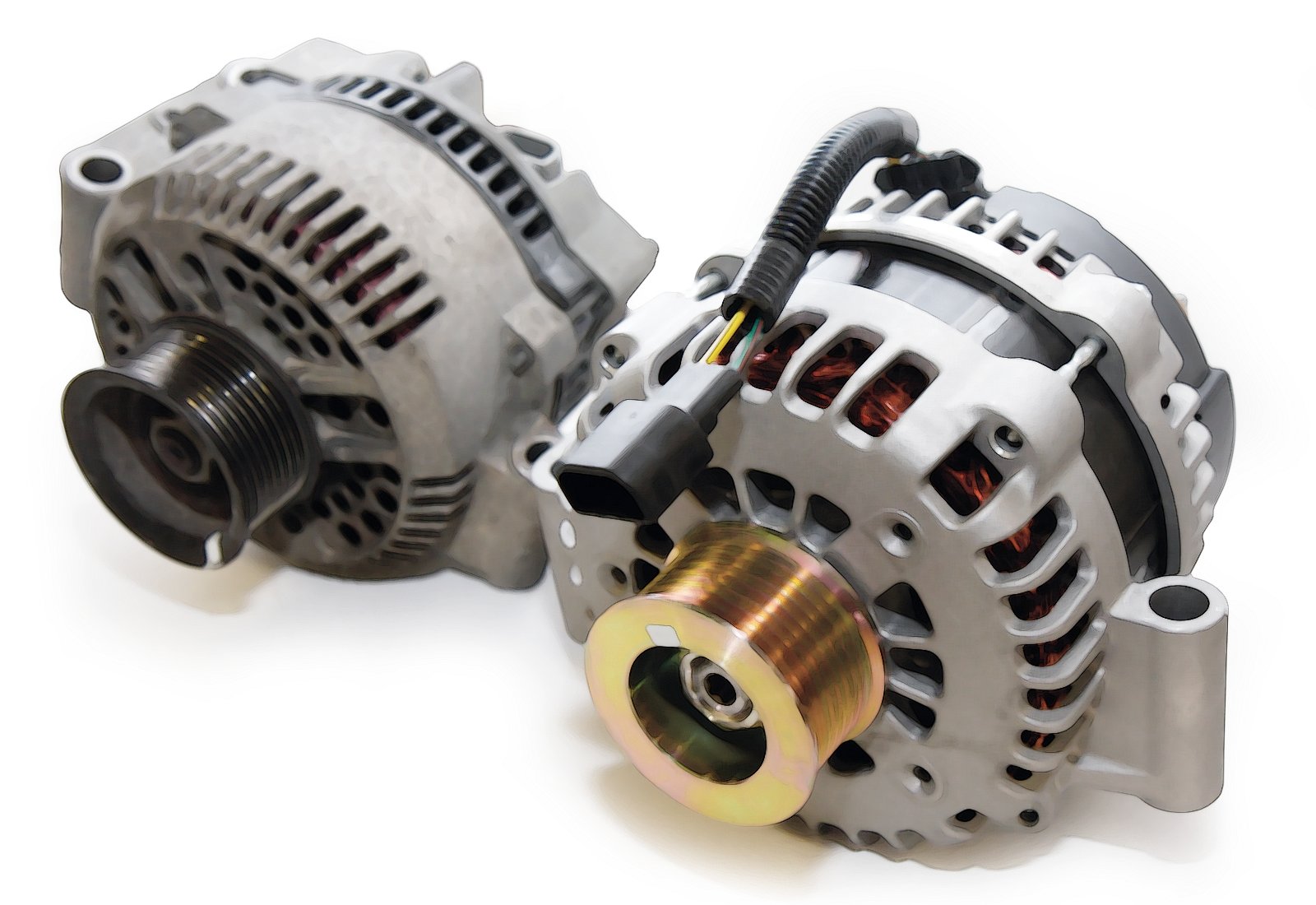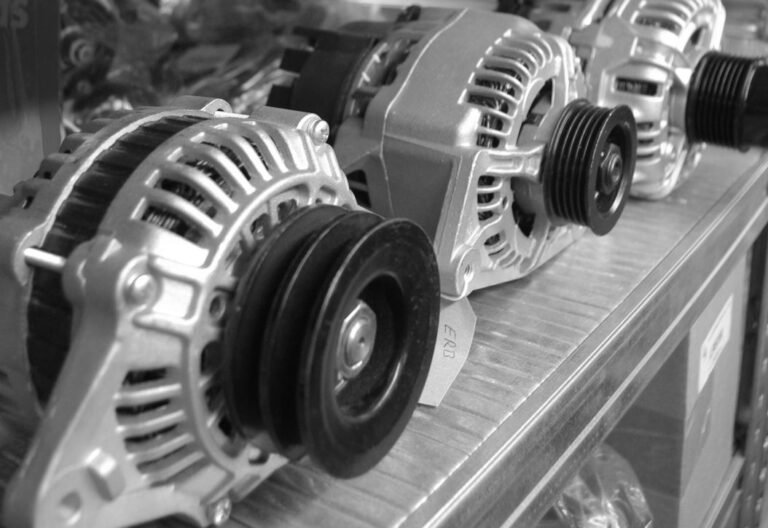
Troubleshooting Toyota Hilux Alternator Issues: A Comprehensive Guide
The Toyota Hilux is a reliable and popular pickup truck known for its durability and performance. However, like any vehicle, it may experience certain issues over time. One of the common problems that Toyota Hilux owners may face is with the alternator. This vital component is responsible for charging the battery and powering the electrical systems of the vehicle. When it malfunctions, it can cause a host of problems and leave you stranded on the road. In this comprehensive guide, we will discuss the common issues that can arise with the Toyota Hilux alternator and provide tips on troubleshooting and fixing them.
Understanding the Role and Importance of the Toyota Hilux’s Alternator
The alternator in your Toyota Hilux plays a crucial role in keeping your vehicle running smoothly. It’s not just another part of the engine; it’s an essential component that ensures your battery is charged and your electrical systems have power. The alternator is responsible for converting mechanical energy from the engine into electrical energy, which then charges the battery and powers all the electrical components in your vehicle.
Without a properly functioning alternator, your battery would eventually drain, and you wouldn’t be able to start your Hilux or use any of the electrical systems. It means no headlights, no power windows, and no radio. It’s easy to see why the alternator is so essential.
The alternator also works hand in hand with the battery to power your vehicle’s electrical systems when the engine is running. It ensures that the battery remains charged so that it can provide the necessary power when you start your Hilux again. This constant charging and power supply is what keeps everything in your vehicle running smoothly.
Understanding the role and importance of the Toyota Hilux’s alternator is crucial because it allows you to appreciate its function and identify any potential issues that may arise. By having a basic knowledge of how the alternator works and its importance in your vehicle’s electrical system, you’ll be better equipped to troubleshoot any problems that may occur.
Common Signs of a Faulty Toyota Hilux’s Alternator
If you own a Toyota Hilux and are experiencing electrical issues, it’s essential to consider the possibility of a faulty alternator. The alternator is responsible for charging your vehicle’s battery and powering all the electrical systems. If you’re experiencing any of these signs, it’s crucial to have your alternator checked and repaired as soon as possible. Ignoring the problem can lead to further damage and potentially more expensive repairs down the line? When it malfunctions, it can cause a range of problems that can leave you stranded on the road.
But how do you know if your alternator is to blame? Here are some common signs to watch out for:
Dim or flickering lights:
If your headlights or interior lights are dim or flickering, it could indicate a problem with the alternator.
Difficulty starting the engine:
A faulty alternator may not provide enough power to start your engine, causing it to crank slowly or not start at all.
Dead battery:
If your battery is constantly dying, even after being fully charged, it may be due to a failing alternator that is not properly charging the battery.
Electrical issues:
Problems with your power windows, radio, or other electrical components can be a sign of a faulty alternator.
Strange noises:
If you hear unusual noises coming from your engine, such as a grinding or whining sound, it could be a result of a worn-out alternator.
Step by Step Guide on Troubleshooting Your Toyota Hilux’s Alternator
If you’re experiencing issues with your Toyota Hilux’s alternator, don’t worry – we’ve got you covered with this step-by-step guide on troubleshooting. By following these simple steps, you’ll be able to diagnose and fix any problems with your alternator on your own.
Step 1: Check the battery – Start by inspecting your battery for any signs of damage or corrosion. Ensure that it is fully charged and properly connected to the alternator.
Step 2: Test the voltage – With a multimeter, measure the voltage output of the alternator. It should read around 13.8-14.2 volts. If it’s significantly lower or higher, there may be an issue with the alternator.
Step 3: Inspect the belts and connections – Check the alternator belts for any signs of wear or looseness. Tighten or replace them if necessary. Additionally, inspect all the electrical connections to ensure they are secure and free of corrosion.
Step 4: Diagnose the regulator – The voltage regulator controls the amount of power the alternator produces. Test it to see if it’s functioning properly. If not, consider replacing it.
Step 5: Consider other potential issues – If you’ve gone through the previous steps and the issue still persists, it may be time to investigate other potential problems, such as faulty wiring or a defective alternator itself. In this case, it’s best to consult with a professional mechanic.
Advanced Diagnostics: Investigating Potential Alternator Issues
Now that you’ve gone through the basic troubleshooting steps for your Toyota Hilux’s alternator, it’s time to dive into more advanced diagnostics. If you’ve followed the previous steps and are still experiencing issues with your alternator, there may be other potential problems at play.
One possibility is faulty wiring. It’s essential to check all the wiring connections and harnesses associated with the alternator. Look for any loose or damaged wires, and make sure all connections are secure and free of corrosion. Faulty wiring can cause electrical problems and affect the performance of the alternator.
Another potential issue could be a defective alternator itself. While uncommon, alternators can develop internal faults that can’t be resolved through basic troubleshooting. If you suspect that your alternator is defective, it’s best to consult with a professional mechanic who has the tools and expertise to diagnose and fix the issue properly.
Remember, diagnosing complex electrical problems can be challenging, and it’s always better to seek professional assistance if you need clarification. They will have the knowledge and equipment to accurately pinpoint the problem and provide you with the best solution.
Seeking Professional Assistance: When to Consult with a Mechanic
When it comes to dealing with alternator issues in your Toyota Hilux, seeking professional assistance becomes necessary. While basic troubleshooting and repairs can be done on your own, there are instances where the expertise of a mechanic is invaluable.
If you’ve gone through the troubleshooting steps outlined in this guide and are still experiencing problems with your alternator, it’s time to consult with a mechanic. Some signs that indicate it’s time to seek professional assistance include:
- Lack of experience: If you’re not comfortable working on complex electrical systems or need the necessary tools, it’s best to leave the job to a professional mechanic.
- Persistent issues: If you’ve followed all the troubleshooting steps and the problem continues to persist, a mechanic will have the knowledge and expertise to diagnose the issue and provide an effective solution accurately.
- Warranty coverage: If your vehicle is still under warranty, attempting repairs on your own may void the warranty. It’s essential to consult with a mechanic who can address the problem while keeping the warranty intact.
Remember, a professional mechanic will have access to specialized tools and diagnostic equipment that can quickly identify and resolve alternator issues. They will also have the experience to handle any potential complications that may arise during the repair process.
Keeping Your Alternator Healthy: Preventative Maintenance Tips
To ensure that your Toyota Hilux’s alternator stays healthy and continues to perform at its best, it’s essential to follow some preventative maintenance tips. By taking proactive steps, you can extend the lifespan of your alternator and minimize the risk of future issues. Here are some tips to keep your alternator in top shape:
- Regularly inspect the belts: The belts that drive the alternator can wear out over time. It’s essential to check them regularly for any signs of wear, cracking, or looseness. Replace them if necessary to maintain proper tension and prevent slipping.
- Clean and tighten electrical connections: Over time, the electrical connections to the alternator can become corroded or loose. Clean them with a wire brush and tighten them to ensure a secure connection and optimal performance.
- Avoid overloading electrical systems: Excessive use of electrical components, such as high-powered stereos or aftermarket accessories, can put strain on the alternator. Be mindful of the power demands and avoid overloading the electrical system to prevent excessive wear on the alternator.
- Keep the battery in good condition: A weak or faulty battery can put added strain on the alternator. Regularly check the battery’s voltage and ensure it is properly charged. Replace it if necessary to prevent the alternator from working harder than it needs to.
- Follow the recommended maintenance schedule: Refer to your vehicle’s owner’s manual for the manufacturer’s recommended maintenance schedule. Adhering to the recommended maintenance intervals, such as oil changes and filter replacements, can help keep your entire vehicle, including the alternator, running smoothly.
3RZ-FE Hilux Alternator Maintenance: Top Tips for Longevity
Maintaining the longevity of your 3RZ-FE Hilux Alternator is crucial for the overall performance of your vehicle. Here are some top tips to ensure that your alternator stays in optimal condition for years to come.
Firstly, regularly inspect the belts that drive the alternator. Over time, they can wear out or become loose, which can affect the performance of the alternator. Make sure to check for any signs of wear, cracking, or looseness, and replace the belts if necessary.
Next, it’s essential to keep the electrical connections clean and tight. Corroded or loose connections can hinder the alternator’s performance, so clean them with a wire brush and tighten them to ensure a secure connection.
Additionally, be mindful of overloading the electrical systems. Excessive use of high-powered stereos or aftermarket accessories can put a strain on the alternator. To prevent excessive wear, avoid overloading the electrical system and be mindful of power demands.
Maintaining a good-condition battery is also crucial. Weak or faulty batteries can put added strain on the alternator, so regularly check the battery’s voltage and ensure it is properly charged. Replace the battery if necessary to prevent unnecessary stress on the alternator.
FAQs
1. How do I know if my Toyota Hilux alternator is failing?
Common signs of a failing alternator in a Toyota Hilux include:
- Dim or flickering lights.
- Difficulty starting the engine.
- A constantly dying battery.
- Electrical issues.
- Strange noises coming from the engine.
2. Can I troubleshoot my Toyota Hilux’s alternator issues on my own?
Yes, you can troubleshoot some alternator issues on your own. The step-by-step guide provided in this comprehensive guide will walk you through the process of troubleshooting and fixing common problems with your Toyota Hilux’s alternator.
3. How often should I inspect and maintain my Toyota Hilux’s alternator?
It is recommended to regularly inspect and maintain your Toyota Hilux’s alternator to prevent potential issues. Some preventative maintenance tips include checking the belts and electrical connections, avoiding overloading the electrical systems, keeping the battery in good condition, and following the manufacturer’s recommended maintenance schedule.
4. Can a faulty alternator cause other electrical problems in my Toyota Hilux?
Yes, a faulty alternator can cause other electrical problems in your Toyota Hilux. The alternator is responsible for providing power to all the electrical components in your vehicle. When it malfunctions, it can lead to issues such as dim or flickering lights, power window and radio problems, and even difficulty starting the engine.
Conclusion
In this comprehensive guide, we have discussed the common issues that can arise with the Toyota Hilux alternator and provided tips on troubleshooting and fixing them. We explored the role and importance of the alternator the common signs of a faulty alternator, and provided a step-by-step guide for troubleshooting. We also discussed advanced diagnostics, the importance of seeking professional assistance when needed, and preventative maintenance tips to keep your alternator healthy. By following these guidelines, you can ensure that your Toyota Hilux’s alternator stays in optimal condition and avoid any future issues.



